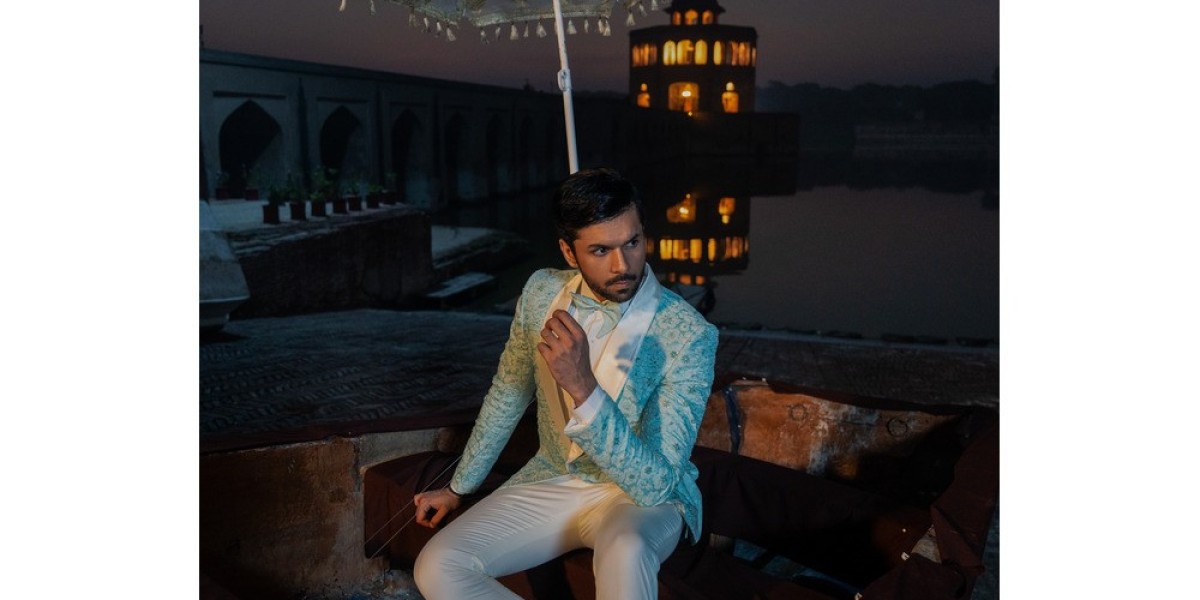The History of Suit design for Men’s
The suit design for men as we know it today has gone through substantial transformations. Its evolution is marked by changes in silhouettes, materials, and styles, reflecting societal shifts and cultural influences over time.
Origins in the Renaissance (1500s-1600s)
The origins of the modern suit can be traced back to the Renaissance period when men wore doublets (fitted jackets), breeches, and hose. These garments were often elaborately decorated and made from luxurious fabrics, reflecting the wearer’s social status. This period marked the early formation of structured, layered clothing for men, which laid the groundwork for what would eventually become the suit.
The Birth of the Modern Suit in the Regency Era (1800s)
In the early 19th century, the British dandy and style icon Beau Brummell popularized a streamlined, understated style for men that emphasized simplicity, elegance, and cleanliness. Brummell's approach involved dark, fitted coats, plain cravats, and trousers, in contrast to the ornate clothing of the previous century. This minimalist, tailored look is regarded as the precursor to the modern suit.
The Victorian and Edwardian Eras (1837-1910)
As the Industrial Revolution transformed society, fashion shifted towards practicality. During Queen Victoria's reign, frock coats (long, fitted coats) became standard attire for formal occasions. In the late Victorian era, the lounge suit emerged as a more casual option. Featuring a shorter jacket and matching trousers, it quickly gained popularity, especially among the middle class.
During the Edwardian era, the sack suit became a common sight. With its loose, boxy silhouette and three-button jacket, the sack suit was less fitted than previous styles and offered more comfort. This era set the foundation for modern business attire and marked the rise of the ready-to-wear suit industry.
The Roaring Twenties and the Golden Age of Suits (1920s-1940s)
The 1920s brought an era of experimentation in men’s fashion. Suits became more tailored and closer-fitting, with slim lapels and high-waisted trousers. Pinstripes, checks, and flannels gained popularity, adding variety to suit designs. The Great Depression in the 1930s influenced a shift towards simpler, darker suits, though wider lapels and structured shoulders became prominent in the following decade.
The 1940s witnessed the rise of the double-breasted suit, with wide lapels, padded shoulders, and tapered waists. These suits conveyed strength and confidence, reflecting the resilience of society during and after World War II.
ATTENTION: suit design for men, while deeply rooted in tradition, continues to evolve with modern trends and innovations in tailoring, fabrics, and aesthetics.
The Mid-Century Modern Look (1950s-1960s)
The 1950s saw a return to a slimmer, more understated style, led by figures like Frank Sinatra and Cary Grant. Suits were often single-breasted, with narrow lapels and minimal shoulder padding, creating a clean silhouette. This period introduced the “Mad Men” look, marked by slim ties, well-fitted jackets, and timeless colors.
In the 1960s, Italian designers popularized the “Continental cut,” which featured a shorter jacket, narrow lapels, and a sleek fit. This style emphasized a modern, youthful appearance, capturing the spirit of the decade.
The Power Suit of the 1980s
The 1980s saw the resurgence of the bold, “power suit” look, characterized by oversized shoulders, wide lapels, and double-breasted designs. Made famous by figures like Gordon Gekko in Wall Street, the power suit became synonymous with corporate success. Pinstripes, bold colors, and high contrast were popular, reflecting the exuberance and status-focused mindset of the era.
Contemporary Suit Styles (1990s-Present)
In the 1990s, the minimalist trend returned, with looser, less structured suits. However, the early 2000s witnessed a revival of slim-fit suits, as popularized by designers like Hedi Slimane. This trend emphasized fitted silhouettes, narrow lapels, and shorter jackets, creating a modern, sleek look.
Today, men’s suits encompass a range of styles, from classic to contemporary, with tailoring that emphasizes both style and comfort. While the suit remains a symbol of formality, modern designs also accommodate versatility, allowing for casual and business settings alike.
Types of Men’s Suit Designs
There are several key suit designs that define the landscape of men’s formal wear. Each type offers a unique look, catering to different occasions and style preferences.
1. Single-Breasted Suit
The single-breasted suit is the most common and versatile style, featuring a single column of buttons down the front. It typically has two or three buttons and offers a clean, classic look suitable for both professional and formal settings.
2. Double-Breasted Suit
A double-breasted suit has two parallel columns of buttons, creating a more structured and formal appearance. With its origins in military and naval attire, the double-breasted suit is often associated with elegance and authority. This style is best suited for formal occasions, though modern designers have adapted it for a more relaxed fit.
3. Tuxedo (Dinner Suit)
The tuxedo is reserved for black-tie events and is characterized by satin or grosgrain lapels, usually in a shawl or peak style. Tuxedos are traditionally worn with a bow tie, cummerbund, and patent leather shoes. While classic tuxedos are black, modern variations include midnight blue and other dark hues.
4. Three-Piece Suit
The three-piece suit includes a jacket, trousers, and a matching vest or waistcoat. This design offers a more formal, polished look and is often chosen for weddings and upscale events. The vest adds an extra layer, providing a refined touch and allowing the wearer to remove the jacket while maintaining a complete outfit.
Conclusion
The men’s suit is an enduring icon of style and sophistication, symbolizing a blend of tradition, culture, and modern fashion. From its beginnings as an indicator of status and elegance to its current role as a versatile wardrobe staple, the suit has adapted to changes in fashion and social norms, retaining its relevance and timeless appeal.
Today, suits offer an array of styles to suit any occasion, body type, or personal preference. Whether choosing a classic single-breasted suit, a double-breasted design, or a modern slim-fit silhouette, the men’s suit remains a powerful expression of refinement and individuality.









